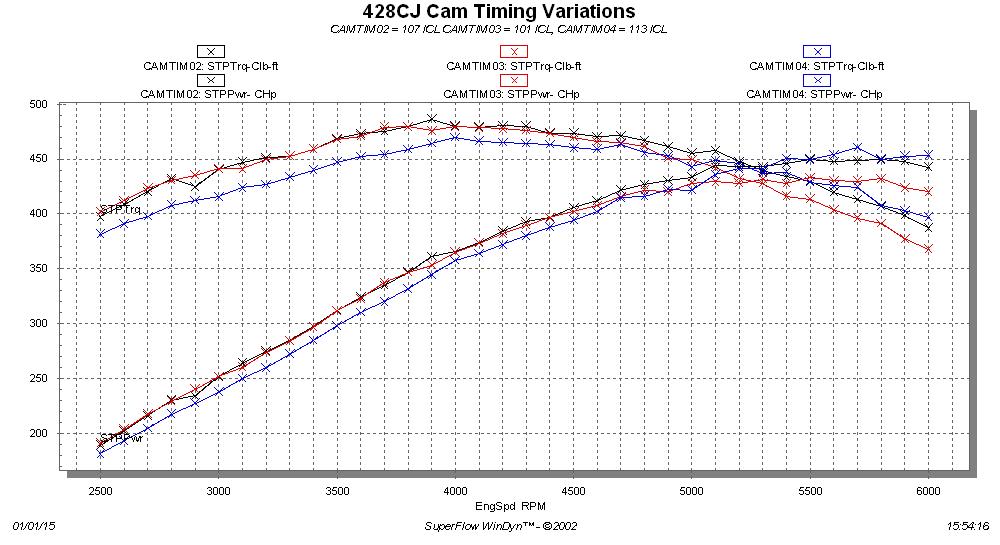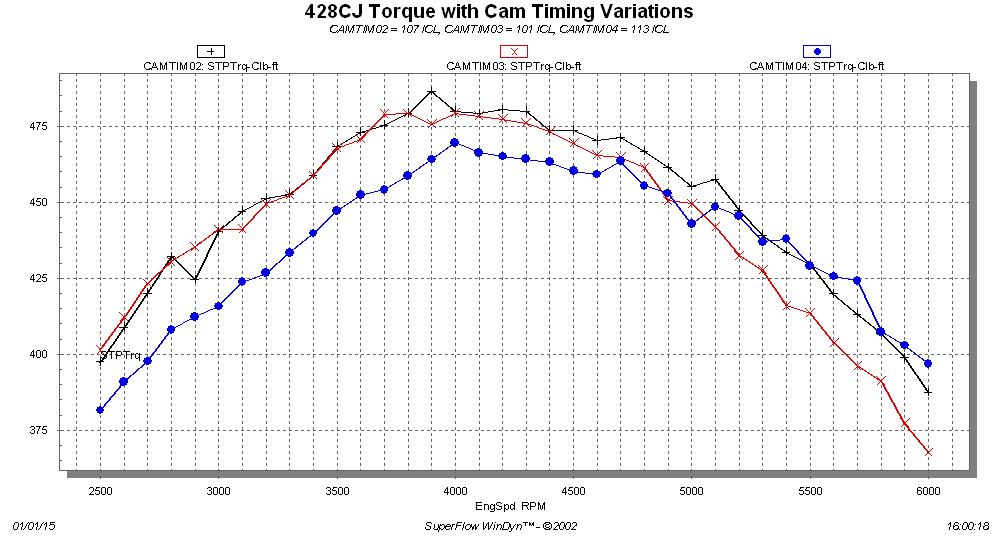Ran the test again today, with some help from my pal Steve P, and basically got the same results as before, despite the obvious timing change. I had thought about what I should see after the discussion earlier in the thread, and figured that with the cam timing changing +/- 6 degrees, I ought to see the same change in the ignition timing. I started off by running a baseline pull at the straight up 107 ICL position and 38 degrees total, then went to the +6 advance point of 101 ICL. Warming up the engine after the timing change, I ran it up to 3000 RPM and sure enough, the timing light said 44 degrees total! So, I dialed back the timing to 38 total, and ran the pull. The only real change was that I didn't lose anything at all on the low end of the RPM scale, just on the high end. After changing to 6 degrees retarded, 113 ICL, I saw 26 total with the timing light, which made sense because I had changed from 6 degrees advanced to 6 degrees retarded, while starting at 38 total. Again I adjusted the ignition timing back to 38 total, and got basically the same results as before.
Here is the data:



The curves are a little hard to follow at the higher RPM range, but I did an average calculation and from 5500 to 6000 RPM, the engine gained an average of 6 HP when the cam was retarded to a 113 ICL. So, retarding the cam definitely gave more power at the top end. I also ran one test to 6500 RPM with the cam at 113 ICL (fearing for the lives of my connecting rods LOL!), but right after 6000 RPM it appears that this engine has some valvetrain issues, because the power falls off and gets pretty choppy. So, I didn't bother to run any more tests at a higher engine speed.
A/F numbers also looked the same as before. Given how far off the timing was on my original test, I'm just a little surprised at these results, but in any case it appears that the original conclusions still hold. And it felt really right to start the new year, hearing a good FE on the dyno

